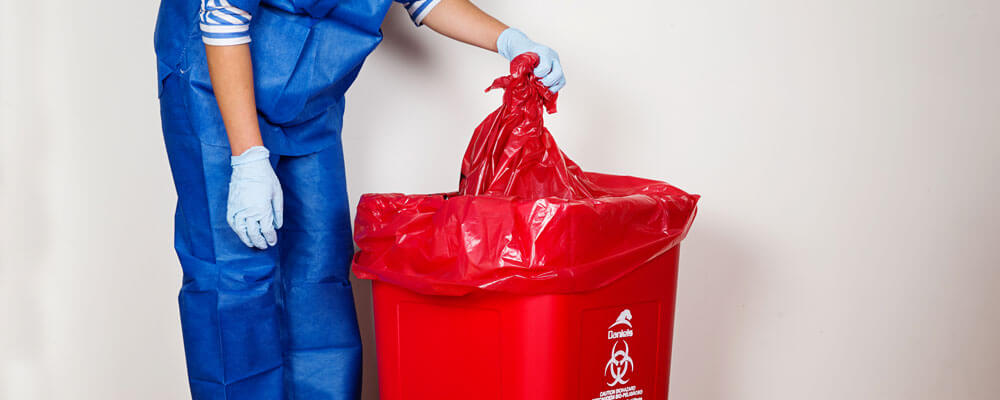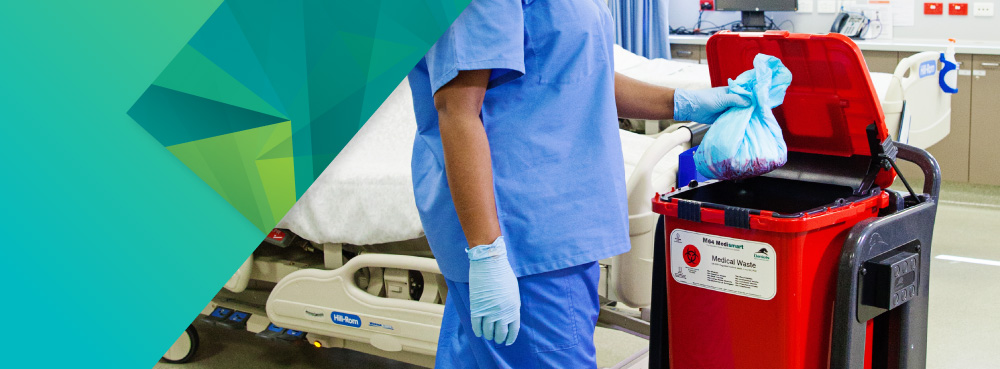Guardians of Sanitation: Citizen Medical Waste Removal Service for Your Satisfaction
Guardians of Sanitation: Citizen Medical Waste Removal Service for Your Satisfaction
Blog Article
Minimize Costs and Maximize Safety: Effective Medical Waste Disposal Approaches
Effective clinical waste disposal strategies are important for healthcare facilities to decrease costs and optimize security. By carrying out proper segregation and categorization, reliable product packaging and labeling, safe transportation and handling, efficient therapy and disposal approaches, and compliance with regulative standards, medical care centers can ensure the risk-free and accountable management of medical waste.

Correct Partition and Classification
Correct partition and categorization are essential elements of efficient medical waste disposal methods, making sure the safety and security of medical care employees, the general public, and the setting - medical waste removal. medical waste disposal services with WasteX. By dividing different sorts of clinical waste at the point of generation, healthcare centers can reduce the risk of cross-contamination and possible damage to communities and people
Among the key variables in appropriate partition is the identification and category of medical waste. This entails categorizing waste right into different teams, such as contagious, unsafe, radioactive, or pharmaceutical waste. Each group needs details handling, storage, and disposal approaches to avoid any kind of unfavorable results on human health and the setting.
Furthermore, appropriate partition also consists of using color-coded tags and containers to clearly determine and set apart the various sorts of clinical waste. This helps health care employees and waste management personnel to quickly recognize and manage the waste suitably. As an example, red containers might be made use of for infectious waste, while yellow containers may be assigned for contaminated materials.
Along with segregation, proper classification also entails the right packaging and control of medical waste. This makes sure that waste is safely stored and transported without presenting any kind of risks to individuals or the atmosphere. Using watertight and puncture-resistant containers, as well as properly securing and labeling them, assists to avoid any kind of unexpected direct exposure or release of hazardous materials.
Reliable Packaging and Classifying
Efficient packaging and labeling play an essential role in ensuring the safe and effective disposal of medical waste. Correct product packaging is necessary to prevent leakage, breakage, or spillage throughout transport and handling. It helps to reduce the danger of contamination and safeguards health care workers, waste monitoring personnel, and the environment from potential hazards.
Medical waste needs to be packaged in strong and watertight containers that are immune to penetrate and breakage. These containers ought to be properly sealed to avoid any kind of leak. Furthermore, the packaging ought to have the ability to stand up to the conditions of transport, including temperature variants and rough handling.
Identifying is equally crucial as it offers essential details regarding the contents of the waste and any type of potential dangers associated with it. The tags must include the name of the healthcare center, the type of waste, and any kind of special handling guidelines. Clear and standardized labeling guarantees that waste management workers can easily determine and handle the waste properly.
Reliable packaging and labeling additionally aid in the appropriate partition and categorization of clinical waste. Clear labeling permits simple recognition of various waste streams, such as contagious waste, sharps, or pharmaceutical waste. This aids in streamlining the disposal process and making certain that the waste is treated or disposed of based on regulative standards.
Safe Transportation and Handling
Guaranteeing the secure transport and handling of clinical waste is of utmost significance in order to protect against any potential health and wellness and ecological threats. Clinical waste, such as sharps, contaminated materials, and pharmaceutical waste, need to be effectively packaged and taken care of to decrease the threat of exposure to unsafe substances and virus.
Delivering clinical waste requires compliance with stringent regulations and guidelines set by ecological companies and regional authorities. These regulations aim to protect the health and wellness of employees associated with waste monitoring and prevent the launch of dangerous materials into the setting.
To ensure secure transportation, clinical waste should be positioned in puncture-resistant more info here and watertight containers that are correctly secured and labeled. These containers ought to be secured in a manner that protects against spills or breakage during transit (medical waste removal near me). In addition, it is important to make use of specialized cars geared up with suitable safety features to carry clinical waste. These cars ought to have ample ventilation and be developed to avoid leak or contamination.
Managing medical waste also requires correct training and adherence to security protocols. Personnel entailed in the handling of clinical waste need to put on suitable personal safety devices (PPE) such as gloves, dress, and masks to minimize the danger of exposure. They need to likewise adhere to strict health methods to stop the spread of infections and make sure the secure disposal of waste.
Reliable Treatment and Disposal Methods
Carrying out proper therapy and disposal approaches is essential in taking care of clinical waste properly and decreasing potential health and wellness and environmental dangers. Clinical waste, that includes sharps, contagious products, chemicals, and pharmaceuticals, can position substantial threats otherwise dealt with and taken care of effectively. There are a number of treatment and disposal approaches available that stick to governing guidelines and promote secure practices.
One typical approach is incineration, which involves burning the waste at high temperatures. Incineration works in damaging microorganisms and lowering the quantity of waste, however it can launch harmful pollutants into the air if not appropriately controlled. For that reason, it is very important to use modern-day incinerators outfitted with emission control modern technologies.
One more approach is autoclaving, which uses vapor and pressure to decontaminate the waste. Autoclaving is effective in killing pathogens and minimizing the volume of waste, but it calls for cautious surveillance and upkeep to make sure correct functioning. The decontaminated waste can after that be safely gotten rid of in a garbage dump.
Chemical therapy is an additional choice, which involves using anti-bacterials or various other chemicals to neutralize virus. This approach is commonly made use of for fluid waste, such as lab specimens. It is essential to make use of proper chemicals and comply with appropriate treatments to ensure reliable treatment and protect against environmental contamination.

Compliance With Regulatory Standards
Abiding by regulative standards is important in making certain proper compliance with medical waste disposal techniques. These guidelines are put in area to protect public health and wellness, protect against environmental contamination, and preserve office safety and security. Compliance with i thought about this regulative standards is crucial for healthcare facilities, as non-compliance can cause fines, fines, and reputational damage.
Regulatory guidelines outline the proper handling, storage, transportation, and disposal of clinical waste. These standards additionally resolve the partition of various waste streams, such as sharps, contagious waste, and pharmaceutical waste.
To preserve compliance, healthcare centers need to develop detailed waste administration programs that include staff training, regular audits, and recurring surveillance. It is necessary to maintain updated with any updates or adjustments to governing guidelines, as practices might advance gradually. By staying informed and applying appropriate protocols, medical care centers can decrease the potential for governing infractions and protect the health and wellness of their personnel, patients, and the bordering community.
Verdict
In final thought, executing reliable medical garbage disposal techniques is essential for minimizing prices and maximizing security. Appropriate partition and classification, effective product packaging and labeling, secure transportation and handling, and reliable treatment medical waste disposal services with WasteX and disposal methods are crucial actions to guarantee conformity with governing standards. medical waste removal near me. By adhering to these approaches, health care centers can protect the atmosphere and public wellness while also minimizing economic concerns connected with medical waste management
By carrying out correct segregation and categorization, reliable product packaging and labeling, safe transportation and handling, efficient therapy and disposal methods, and compliance with regulative standards, medical care centers can ensure the liable and secure management of medical waste. Red containers may be utilized for contagious waste, while yellow containers might be marked for unsafe waste.
Standardized and clear labeling guarantees that waste administration workers can quickly determine and manage the waste suitably. (medical waste disposal services with WasteX)
Clear labeling allows for very easy identification of different waste streams, such as infectious waste, sharps, or pharmaceutical waste. These standards also deal with the partition of various waste streams, such as sharps, infectious waste, and pharmaceutical waste.
Report this page